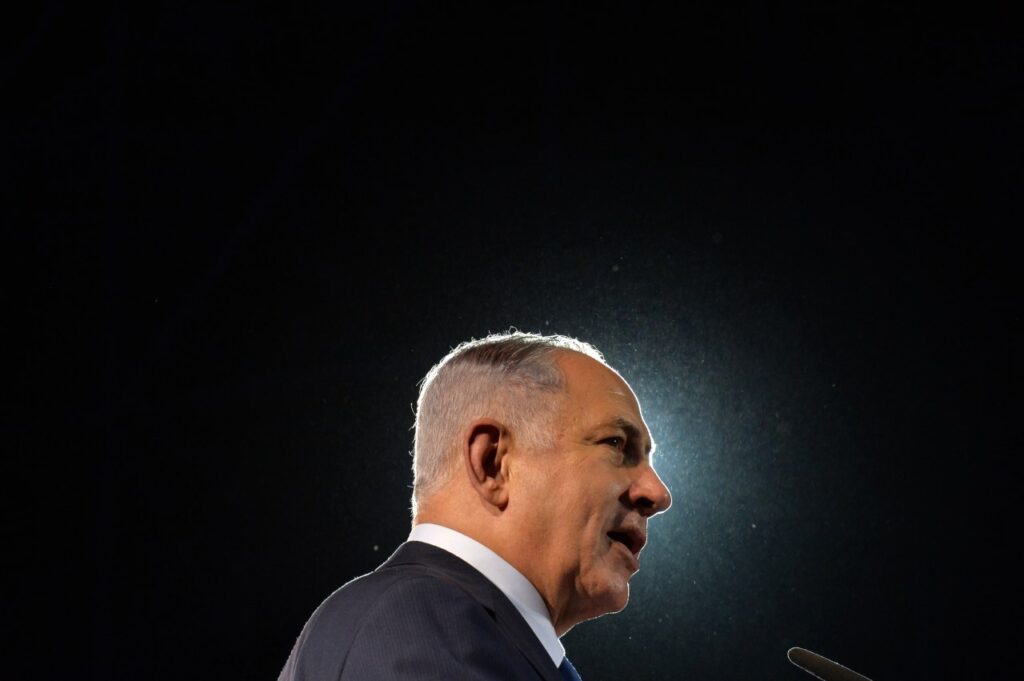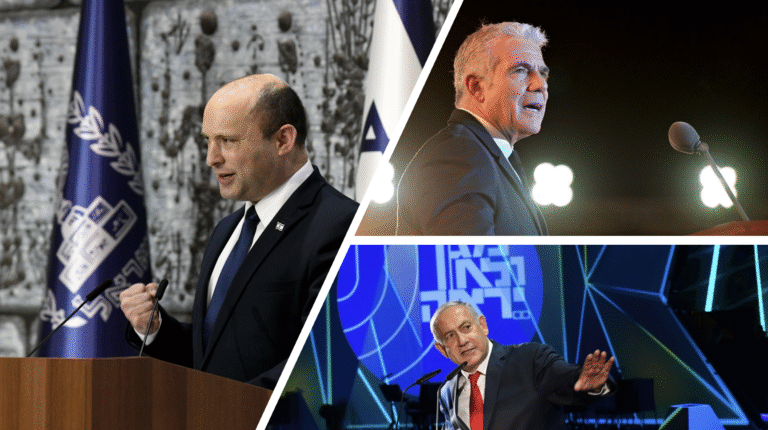It’s decision time for Benjamin Netanyahu. Between Finance Minister Bezalel Smotrich and IDF Chief of Staff Eyal Zamir, between dragging things out and bringing the war to a decisive end. He would do well to speak up, as I wrote in my Shabbat column for Israel Hayom. You can read it on Israel Hayom’s website here.
***
The half-life moment
Since around 2 p.m. on October 7, Hamas has become a different organization. Not really, of course. Just on television. Until that hour, its media arm was flooding the internet with videos of lynchings, executions, and homes set ablaze. Afterward, every video it released portrayed Hamas terrorists guarding the hostages at all costs. The aim was to cast Israel’s government as the villain, the side abandoning its own citizens and soldiers in enemy hands.
This week, Israel’s team for the hostages and missing persons debated whether the video showing Evyatar David in Holocaust like conditions marked a shift toward a new threat to kill the hostages. Their conclusion: it did not. They assessed that Hamas was trying to use David for its “Starving Gaza” campaign and failed to realize that the footage showed the opposite, that Gaza is the one doing the starving.
But Israeli officials believe the situation will change if Israel actually storms Gaza City. Until now, Hamas has used the hostages as a kind of “get out of jail free” card whenever it found itself in military trouble – and to extend the Monopoly metaphor, to send Israel back to the starting square, “GO.”
If IDF forces enter new areas where they haven’t previously operated, there’s a real and terrifying chance that hostages will be executed to shock Israeli public opinion and spark protests to stop the war. The terrorist organization’s diabolical rationale is that the hostages are its nuclear weapon, the core of its existence.
The idea of partial deals is borrowed from a nuclear concept: the half-life. Radioactive material never disappears entirely, but those who remember their physics lessons know that after a given interval, half of it decays. Hamas has been willing to release half of the remaining living hostages, knowing that the “hostage problem” would remain on the Israeli side, whether there are 20 or 200 left. Netanyahu, for his part, has been willing to pause the war, so long as that did’t mean full capitulation.
Now it seems we’ve reached the point where there’s nothing left to split. Netanyahu had hoped to free another ten living hostages before the final conquest of the Strip, to minimize the unavoidable tragedy. That’s why Israel has stalled for nearly two months. But Hamas won’t release another ten. Maybe it fears it will be left with too few hostages, just one or two rescue operations away from losing its leverage. Maybe it believes Israel is under international pressure, so why give anything up? Either way, the half-life period is over.
This week, Netanyahu insisted once again that a military operation would help achieve both war objectives — dismantling Hamas and freeing the hostages. At some point, he will have to face the public and acknowledge that the second goal may no longer be attainable. The hostages will not be released through partial deals, surrender isn’t an option, and so there is no choice but to move forward. The public deserves to hear that painful truth.
One last push, or not?
No one said this to me directly, but my impression is that the disagreement over how to bring down Hamas doesn’t just lie between the Diplomatic-Security Cabinet and the IDF chief of staff — it also exists between Chief of Staff Lt. Gen. Eyal Zamir and chief of Southern Command, Maj. Gen. Yaniv Asor.
Zamir supports encircling the three remaining population centers — Gaza City, the central refugee camps, and al-Mawasi. The rationale is to reduce the number of troops tied down in the Strip, replenish supplies, lower friction and casualties, and push the front line farther from Israeli communities near the border. It seems to me that Maj. Gen. Asor would prefer a full conquest of the Strip. Dismantling Hamas’ infrastructure across the entire Gaza Strip is essential, and it’s better very late than never.
Does that mean Zamir regrets appointing Asor? Not at all. Nor does it mean anyone regrets appointing the current chief of staff. Netanyahu’s son Yair, as usual, spewed nonsense this week from wherever he’s currently residing, claiming it was the defense minister who dictated the appointment. The truth is more complex: Netanyahu would have preferred someone like Brig. Gen. David Zini to rise in the ranks. His family even pushed him to appoint Zini to replace Herzi Halevi. But ministers and advisors explained that such a move — or elevating Brig. Gen. Roman Gofman to chief of staff — would make it harder to win legitimacy for dramatic action in Gaza or Iran from across the political spectrum. That paved the way for Zamir’s appointment. Since then, Netanyahu has complained about him at every opportunity. Old habits die hard.
Finance Minister Bezalel Smotrich believes Zamir has been captured by the opposition and the elite establishment, and that he’s reversed the order of war priorities — putting hostages first, defeating Hamas second. Maybe. But the real dispute centers on the reserve forces.
There’s wear and tear across all branches of the military, but only the reservists are also watching their businesses and families fall apart. The cornerstone of Zamir’s plan is to ease the burden on the reserves, so they won’t be called up again for an undefined campaign. Netanyahu believes that without defeating Hamas, that’s just postponing the inevitable. His solution is one, significant military push.
Maj. Gen. (res.) Yaakov Amidror, whose thinking aligns with Netanyahu’s, said this week that conquering and clearing the remaining areas of the Strip would take about six months. The plan is for the reserves to handle the first stage, with the regular army continuing afterward. Unless, of course, a compromise is reached, as so often happens, that prolongs the war on one hand, and avoids real resolution on the other.









